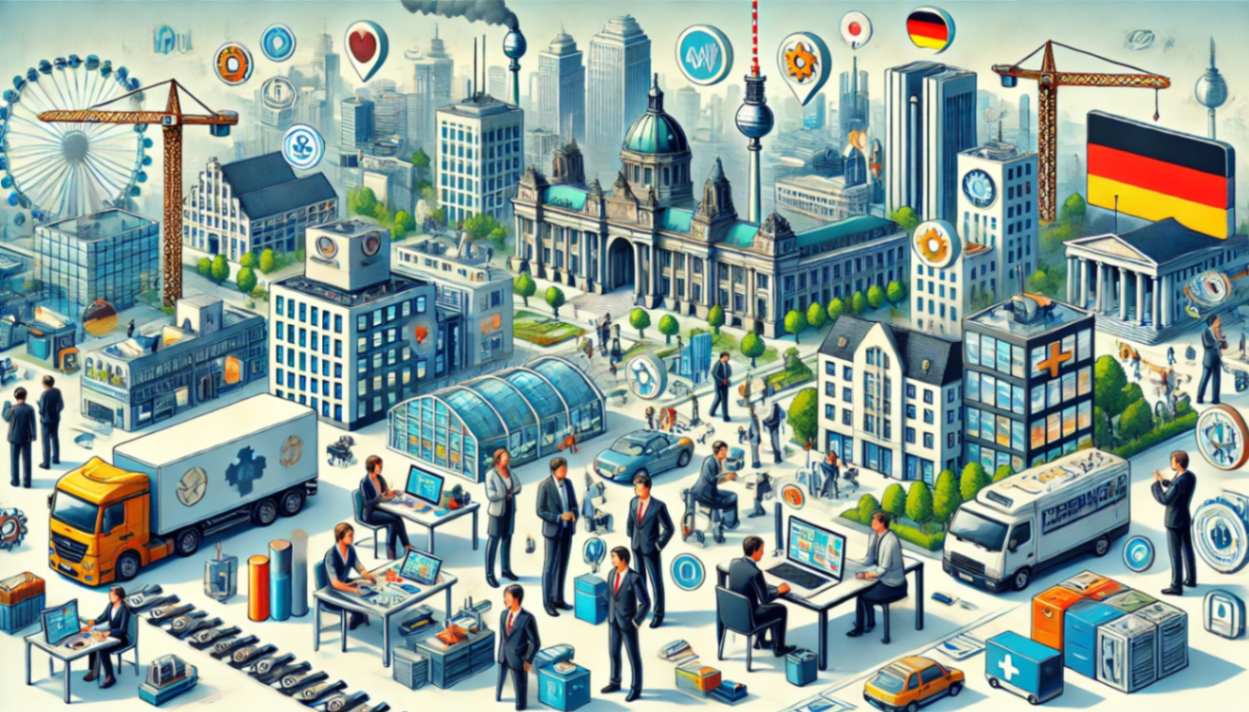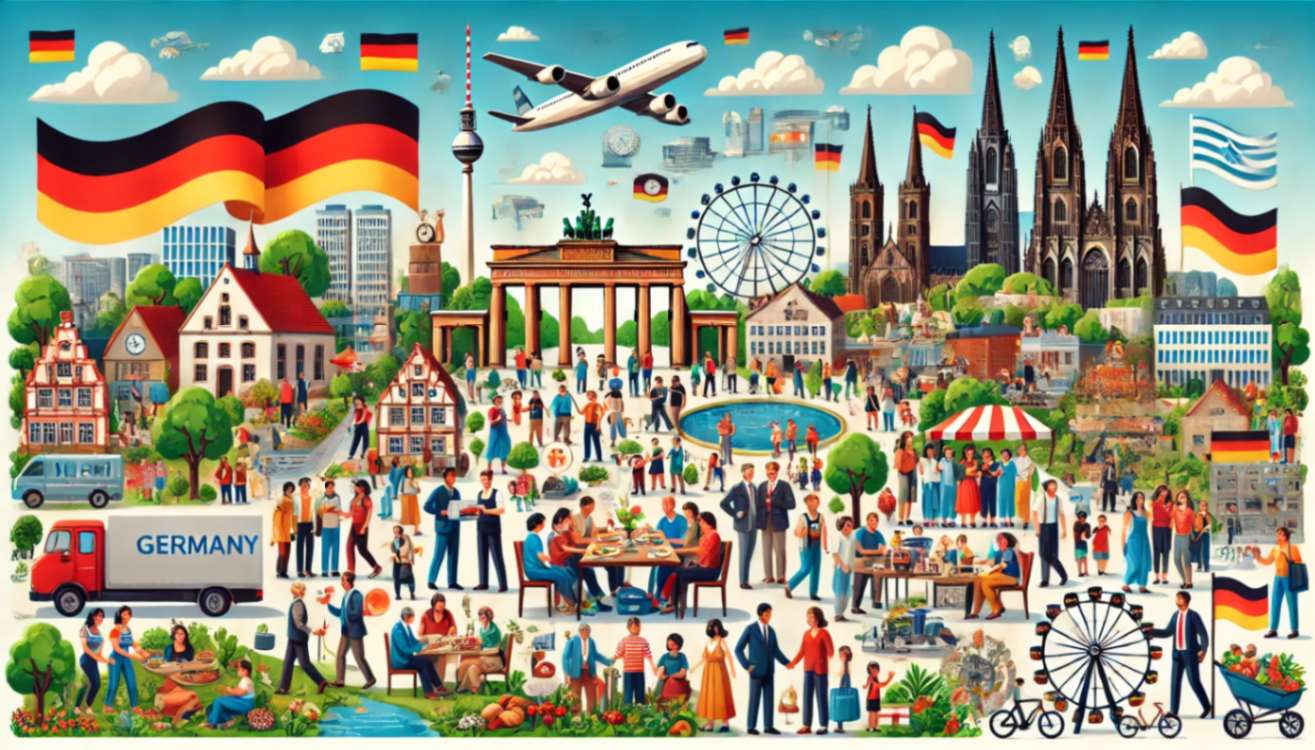The topic of unemployment often stirs a mix of emotions. It’s a measure of a nation’s economic health and a barometer for individual well-being. Germany, known for its robust performance economy and high standards of living, has recently showcased resilience in its unemployment rate, maintaining steadiness despite numerous global challenges. Let’s dive into the intricate details of how Germany is navigating these turbulent times.

Introduction to Germany’s Economic Landscape
Germany stands as Europe’s largest economy and the fourth largest in the world. Its reputation for industrial strength, particularly in automotive, engineering, and manufacturing, is unparalleled. But with great power comes great responsibility. The global economic downturn, exacerbated by the COVID-19 pandemic, posed significant challenges. Yet, Germany’s unemployment rate has remained surprisingly steady. How has Germany managed this feat? Let’s explore.
The Role of Germany’s Economic Policies
Germany’s economic policies are a cornerstone of its stability. The country has long adhered to a model of social market economy, balancing free market capitalism with social policies. This ensures not only economic freedom but also social justice. It’s a fine line to walk, but Germany does it with aplomb.

Impact of COVID-19 on Germany’s Job Market
The pandemic wreaked havoc globally, and Germany was no exception. Businesses shuttered, and many feared a surge in unemployment. However, the German government’s swift intervention through short-time work schemes, known as Kurzarbeit, helped mitigate the worst impacts. These schemes allowed companies to reduce employees’ working hours while the government compensated for the lost wages. This approach not only preserved jobs but also maintained the stability of the labor market.
Industrial Strength and Innovation
Germany’s industrial sector is a powerhouse. From automotive giants like Volkswagen and BMW to engineering marvels in Siemens and Bosch, the country’s industrial backbone is robust. This strength in traditional industries, combined with a push for innovation and technology, has played a significant role in sustaining employment levels. The emphasis on research and development ensures that Germany remains competitive on the global stage.

The Influence of Global Supply Chains
Global supply chains are intricate webs that bind economies together. Disruptions in one part of the world can have cascading effects elsewhere. Germany, being a key player in global manufacturing, felt these tremors. However, its diversified economy and strong domestic supply chains provided a buffer. The country’s ability to adapt and find alternative sources kept the wheels of industry turning.
Education and Vocational Training Systems
One of Germany’s unsung heroes in maintaining a steady unemployment rate is its dual education system. This model combines classroom instruction with on-the-job training, producing a workforce that is highly skilled and adaptable. Vocational training is not seen as a lesser alternative to university education but rather as a respected and viable path. This system ensures that young people are job-ready and capable of meeting the demands of the labor market.

Social Welfare and Support Systems
Germany’s social welfare system is another pillar of its economic resilience. With comprehensive unemployment benefits, health insurance, and other social support mechanisms, the country provides a safety net for its citizens. These measures alleviate the immediate financial pressures of job loss, giving individuals the breathing room to seek new employment or retrain for different sectors.
The Role of Immigration
Immigration has been a hot topic globally, and Germany is no exception. The country has seen significant immigration over the past few decades, which has both bolstered the workforce and presented challenges. The influx of skilled labor has helped fill gaps in the job market, while also contributing to economic growth. However, integrating immigrants into the workforce requires effective policies and support systems, which Germany has been continuously improving.

Sectoral Shifts and Employment Trends
Not all sectors are created equal, and some have fared better than others during global crises. While traditional industries like automotive and manufacturing faced disruptions, sectors such as technology, healthcare, and renewable energy have seen growth. Germany’s ability to pivot and adapt to these shifts has been crucial. The country’s focus on green energy and digital transformation is creating new job opportunities and driving economic resilience.
Challenges on the Horizon
Despite its strengths, Germany is not immune to challenges. The energy crisis, geopolitical tensions, and potential economic slowdowns pose significant threats. The country’s reliance on exports makes it vulnerable to global market fluctuations. Additionally, an aging population and the need for digital transformation present long-term challenges that require strategic planning and investment.

Government Initiatives and Future Plans
The German government decision is proactive in addressing these challenges. Investments in infrastructure, technology, and renewable energy are at the forefront of its agenda. Policies aimed at fostering innovation, supporting startups, and encouraging sustainable practices are being implemented. The government’s focus on creating a conducive environment for business and employment is evident in its strategic initiatives.
Conclusion
Germany’s ability to maintain a steady unemployment rate amidst global challenges is a testament to its resilient economy, robust policies, and adaptive workforce. The blend of traditional industrial strength with innovation and forward-thinking strategies has positioned Germany as a beacon of stability. While challenges remain, the country’s proactive approach and commitment to social and economic balance offer a blueprint for resilience.
FAQs
1. What is Kurzarbeit, and how did it help Germany during the pandemic?
Kurzarbeit is a short-time work scheme that allows companies to reduce employees’ working hours while the government compensates for the lost wages. This measure helped preserve jobs and maintain economic stability during the post pandemic.
2. How does Germany’s dual education system contribute to low unemployment?
Germany’s dual education system combines classroom instruction with on-the-job training, producing a highly skilled and adaptable workforce. This system ensures that young people are job-ready and capable of meeting the demands of the labor market.
3. What are the main challenges facing Germany’s job market in the future?
Germany faces challenges such as an aging population, the need for digital transformation, potential economic slowdowns, and geopolitical tensions. Addressing these issues requires strategic planning and investment.
4. How does immigration impact Germany’s employment rate?
Immigration has bolstered Germany’s workforce by filling job market gaps and contributing to economic growth. Effective policies and support systems are essential for integrating immigrants into the workforce.
5. What sectors in Germany are seeing growth despite global challenges?
Sectors such as technology, healthcare, and renewable energy are seeing growth. Germany’s focus on green energy and digital transformation is creating new job opportunities and driving economic resilience.
